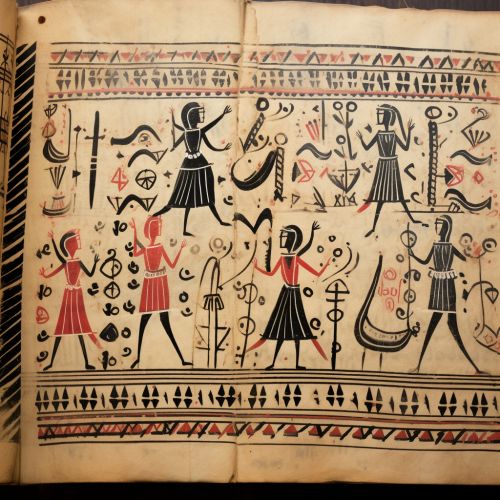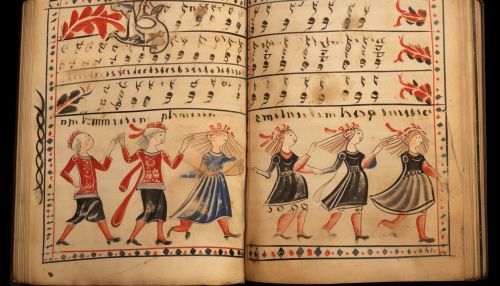Feuillet notation
Overview
Feuillet notation is a system of dance notation that was developed by French dancer and choreographer Raoul-Auger Feuillet in the early 18th century. It is a form of Baroque dance notation that was widely used in Europe during the Baroque period. The system is based on the principle of recording the pattern of the dance on the floor, rather than the specific movements of the body.


History
Feuillet notation was first published in 1700 in Feuillet's book 'Choreographie, ou l'art de décrire la danse'. The system was quickly adopted across Europe and was used to notate many of the popular dances of the time, including the minuet, the gavotte, and the bourrée. The notation was also used in the creation of dance manuals, which were guides for learning and performing dances.
Principles
The fundamental principle of Feuillet notation is the recording of the path of the dance on the floor. The system uses a variety of symbols to represent different steps and movements. The dance floor is represented as a grid, with the top of the page representing the top of the room. The dancer's path is traced on this grid, with different symbols representing different steps. The orientation of the symbols indicates the direction of the movement.
Symbols
Feuillet notation uses a variety of symbols to represent different steps and movements. These include:
- A circle to represent a step with one foot
- A semi-circle to represent a step with the other foot
- A line to represent a slide
- A zigzag line to represent a series of quick steps
- A cross to represent a jump
The orientation of the symbols indicates the direction of the movement. For example, a circle with the open side facing to the right represents a step to the right.
Usage
Feuillet notation was widely used in Europe during the Baroque period. It was used to notate many of the popular dances of the time, including the minuet, the gavotte, and the bourrée. The notation was also used in the creation of dance manuals, which were guides for learning and performing dances.
Legacy
While Feuillet notation is no longer widely used, it has had a lasting impact on the field of dance notation. It was the first system to record the pattern of the dance on the floor, a principle that has been incorporated into many subsequent systems of dance notation. Today, Feuillet's system is studied by dance historians and used in the reconstruction of historical dances.
